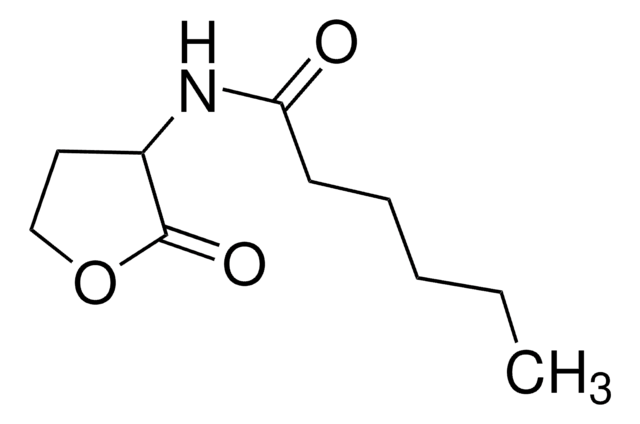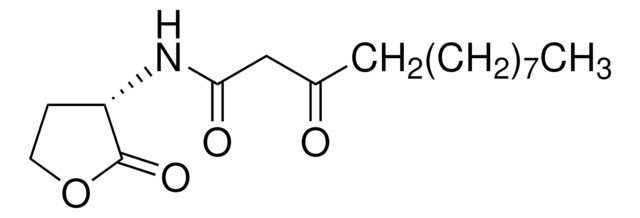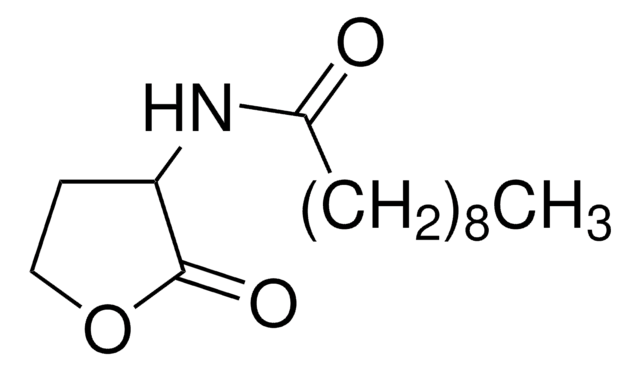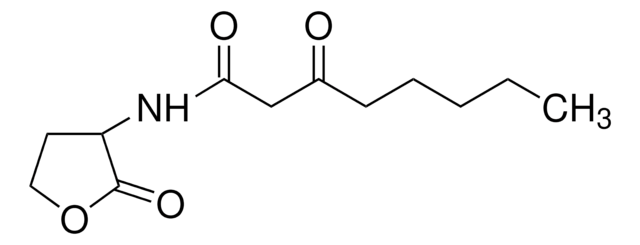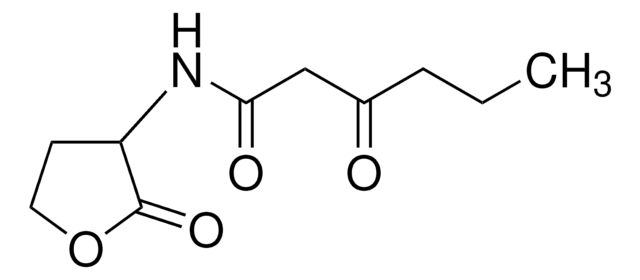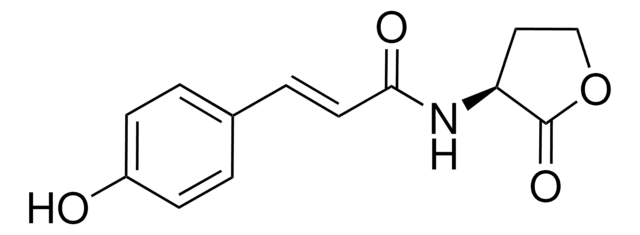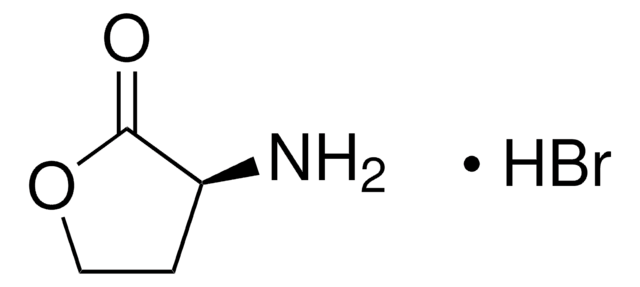Kluczowe dokumenty
10939
N-Heptanoyl-DL-homoserine lactone
≥97.0% (HPLC)
About This Item
Polecane produkty
Nazwa produktu
N-Heptanoyl-DL-homoserine lactone, ≥97.0% (HPLC)
Poziom jakości
Próba
≥97.0% (HPLC)
Formularz
powder with small lumps
kolor
white to faintly brown
temp. przechowywania
−20°C
ciąg SMILES
CCCCCCC(=O)NC1CCOC1=O
InChI
1S/C11H19NO3/c1-2-3-4-5-6-10(13)12-9-7-8-15-11(9)14/h9H,2-8H2,1H3,(H,12,13)
Klucz InChI
FTMZLSDESAOPSZ-UHFFFAOYSA-N
Zastosowanie
Działania biochem./fizjol.
Opakowanie
Kod klasy składowania
11 - Combustible Solids
Klasa zagrożenia wodnego (WGK)
WGK 3
Temperatura zapłonu (°F)
Not applicable
Temperatura zapłonu (°C)
Not applicable
Środki ochrony indywidualnej
Eyeshields, Gloves, type N95 (US)
Wybierz jedną z najnowszych wersji:
Certyfikaty analizy (CoA)
Nie widzisz odpowiedniej wersji?
Jeśli potrzebujesz konkretnej wersji, możesz wyszukać konkretny certyfikat według numeru partii lub serii.
Masz już ten produkt?
Dokumenty związane z niedawno zakupionymi produktami zostały zamieszczone w Bibliotece dokumentów.
Klienci oglądali również te produkty
Active Filters
Nasz zespół naukowców ma doświadczenie we wszystkich obszarach badań, w tym w naukach przyrodniczych, materiałoznawstwie, syntezie chemicznej, chromatografii, analityce i wielu innych dziedzinach.
Skontaktuj się z zespołem ds. pomocy technicznej